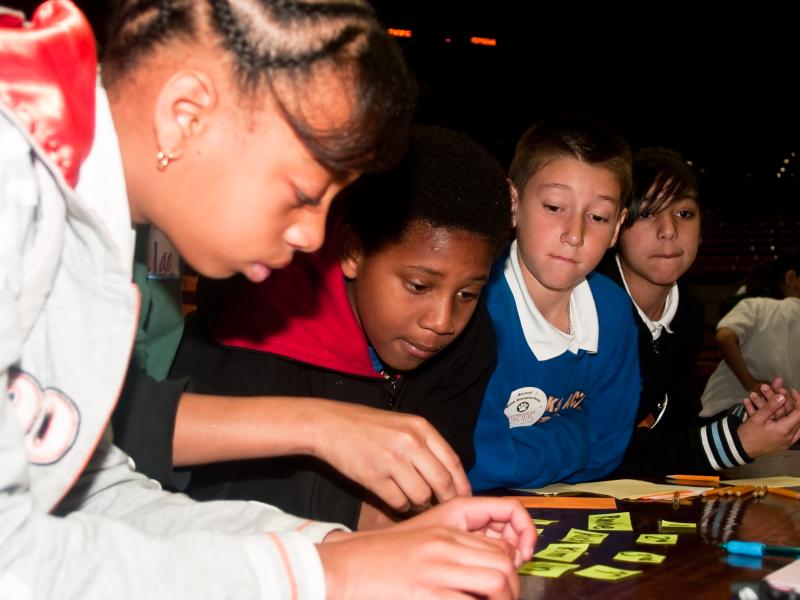I just had the opportunity to spend three great days with a group of high school mathematics teachers preparing to implement a blended approach to instruction into their classroom. These teachers will be developing their students as independent learners, so these students are able to go online to learn some of their algebra. It sounds different and really is.

It is probably not what you think though, the teachers don’t just turn the students loose two days a week. The teachers are spending the summer thinking about how they prepare their students to be able to go online, interact with the content (I’ll explain the use of the term interact below), and then come back together to share what they found and create group understanding. It is radically different for the teachers because they have to not only be able to do the math, they have to be able to let the students do the math and let the students share what they find with each other.
Because of this change in approach, roles in these math classes are different than in most. Students can’t just sit back and passively receive the information from the teachers because the teacher isn’t dispensing it from the front of the classroom. In addition, these ninth graders are in a crucial year of learning as they switch from middle to high school. Iit is incredibly powerful to expose them to this kind of learning situation. They are empowered with exposure to rigorous material, opportunities to manipulate and model algebraic concepts, provided tools for organizing what they learn, and then expected to share it with the rest of the class and the teacher.
The teacher on the other hand is tasked with providing students support as they experience (for many of them the first time) material without the buffer of the teacher (which is as scary for the teacher as it is for the students). Teachers have to be confident that their students can and will learn at high levels, if provided the opportunity, and more importantly teachers have to teach students how to do that. A teacher’s ability to create structures in the classroom that enable students to share what they learn during a lesson is a crucial skill. It’s important for students know what kinds of observations to make, know how to communicate using the language of mathematics, know why the lessons use the examples they use or know when to ask questions of the teacher when they can’t figure it out on their own.
It’s not a fine line it’s a deep chasm between a traditional face to face setting and a blended instructional setting. I applaud these teachers for being willing to take on the challenge and especially their thinking when it comes to understanding how they are going to do this with their students.

I used the term interact earlier in the post, and I think it is an apt description of what students can do with online content rather than being receivers of information. In an online setting students listen (and read) some lessons, watch videos of connections to real-life applications or examples of how to work problemsl, create graphical data displays or tables of data, manipulate models, tiles, and diagrams, and in many lessons they do several of these kinds of activities. It is the dynamic nature of what the computer can provide that makes the learning different in the online environment than in a traditional one. It is, also, one of the challenges that teachers tackling this kind of task face. Students have to be taught how to interact with these tools, they have to be supported in recording their interactions, and they have to be allowed to share their experiences.
I am looking forward to the coming school year to see how these teaches blossom and more importantly how they manage the processes they are tasked with. I’m sure that I’ll be sharing more of what they are doing soon.
Images:
“088/365 More maths today” by stuartpilbrow;
“Math Steeplechase 2010-94” by Inkyhack
